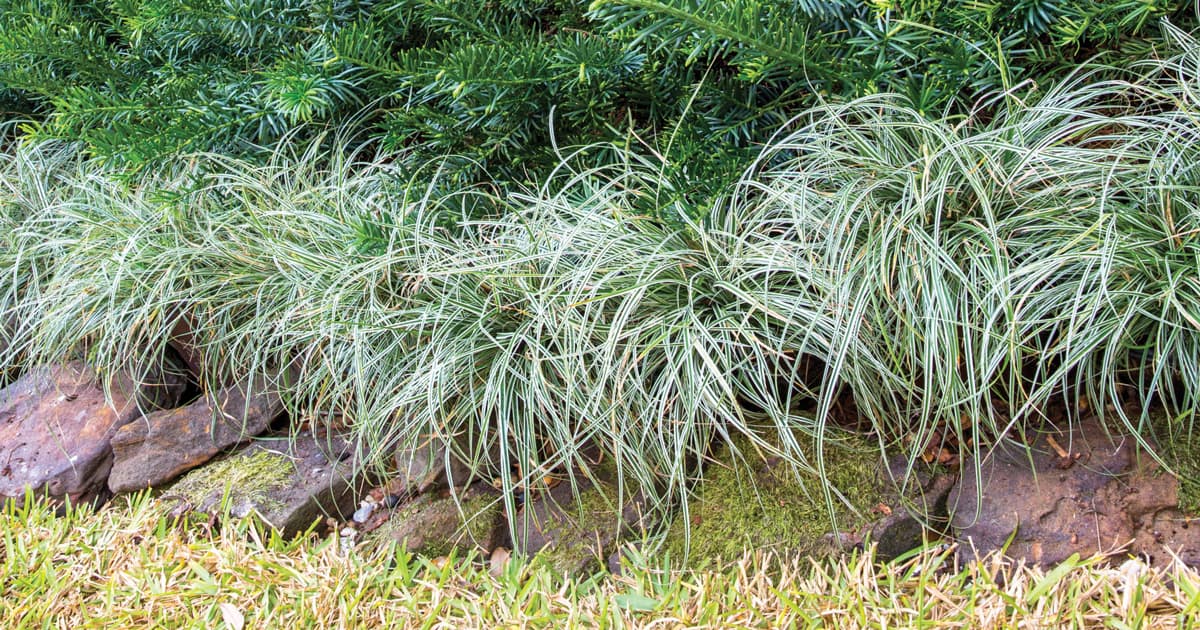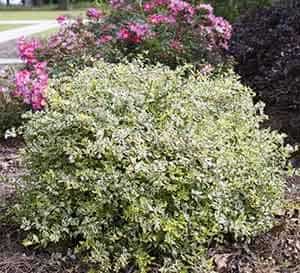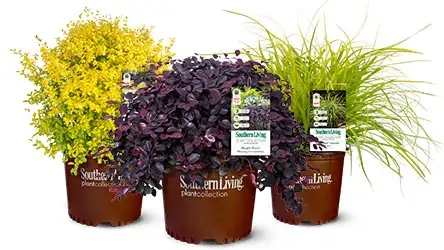By Kimberly Toscano
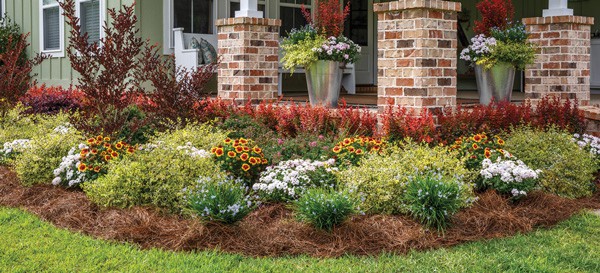
Shaping Beds and Borders
Before you invest time or money into edging a garden bed, make sure the form is strong. Even the most expensive edging materials cannot compensate for a poorly shaped bed. Take the opportunity to revisit existing bed lines and make adjustments as needed. For new garden beds, use hoses to define lines before digging in.
When designing bed lines, consider the form of the lawn or other “empty” spaces in addition to the shape of the bed itself. By establishing a strong form for the lawn, you will create a more unified landscape and garden beds will fall into place.
As you shape beds, also consider maintenance. Terminate bed lines at a right angle to paths, driveways, and other surfaces. This practice creates easy lines for mowing and prevents those small angular shapes that are difficult to plant. Avoid leaving narrow strips of grass between beds and hardscape. Instead, carry beds right up to the edge of existing boundaries such as walkways, driveways, and patios.
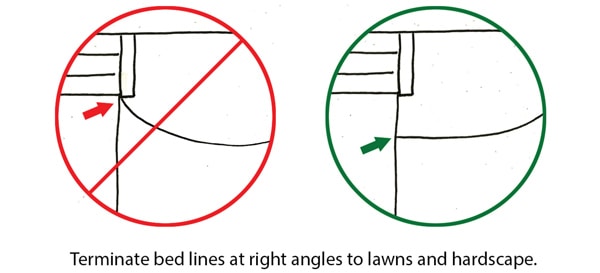
Edging Materials and Methods
With dozens of edging materials available, it can be challenging to select the right one for your landscape. Start with budget in mind. Stone and brickwork are certainly ornate, but can also be quite expensive. If cost is an issue, consider a simple trenched edge or inexpensive strip edging. You can also employ a wide variety of recycled materials for beautiful edges. Once you have a budget in mind, let the style of your home and garden direct your selection of edging.
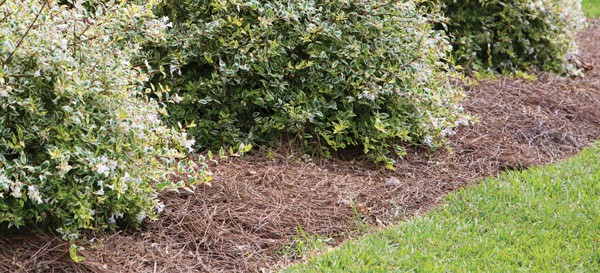
Trenching
The simplest and most cost-effective way to edge a garden bed is with the trench method described below. Trenching establishes a physical break between the garden and lawn, leaving behind a clean line. This method is commonly used in more rustic or naturalized plantings, but can be applied to any landscape style. The downside of the trench method is the need for long-term maintenance. Over time, the edge will require re-cutting and reinforcement as turf grasses encroach and soil settles in the trench.
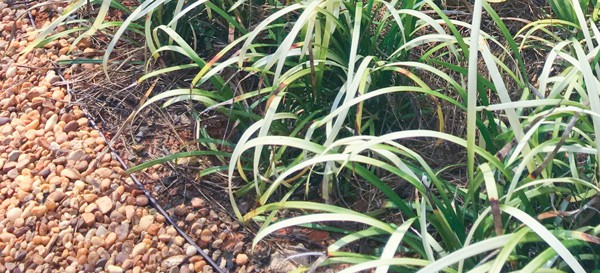
Strip Edging
Vinyl, rubber, or metal edging strips can be purchased at local garden centers and provide an inexpensive means to maintain bed lines. Plastic materials are easier to install than metal, particularly along curves, but metal has a longer life and more refined appearance. Lawn maintenance along the edge is required to keep deep-rooted grasses like bermuda grass from penetrating beds. Many people also choose to weed-eat the edge for a crisp appearance.
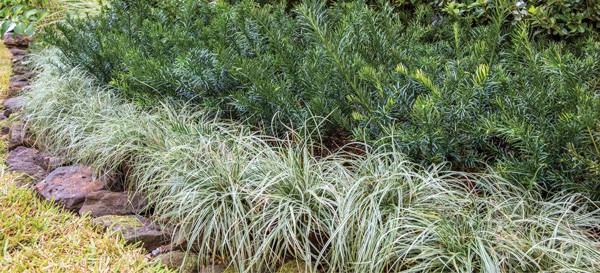
Stonework and Masonry
Looking for the aesthetic of brick or stone without the high price tag? Try scavenging local or recycled materials. Indigenous stone looks at home in the landscape and can often be sourced from farmers and builders looking to jettison these materials. Search for reclaimed bricks at resale shops and online communities. And don’t forget to ask friends and family. Another option – lay a 6- to 12-inch strip of river rock, pea gravel, or decomposed granite between strips of metal edging for an easy to maintain stone border.
Other Materials
While we are in the recycling mindset, there are plenty of cast-off materials awaiting a second life in the garden. Glass bottles, wood scraps, and terra cotta pots can all be used to create unique garden edges. For a more modern expression, edge beds with steel, wood, or concrete.
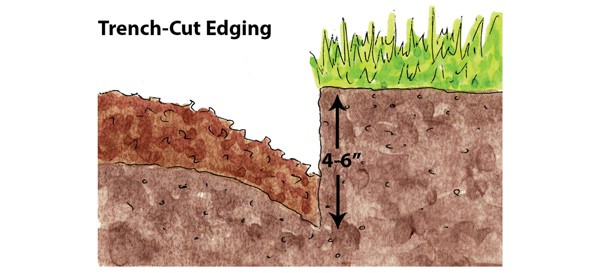
How to Cut a Trenched Edge
This age-old technique requires only a shovel and a little time. Use a sharp flat spade to cut along the entire bed line. Insert the spade vertically as you work – slice straight down through the turf. After you have established your outline, move to the inside of the bed line and cut at an angle to remove the turf. This process creates a V-shaped trench along the edge of the planting bed, ideally 4-6 inches deep. Smooth the soil inside the bed to slope gently away from the cut. You can reinforce this line throughout the season by trimming turf with a weed eater or periodically running an edger.

